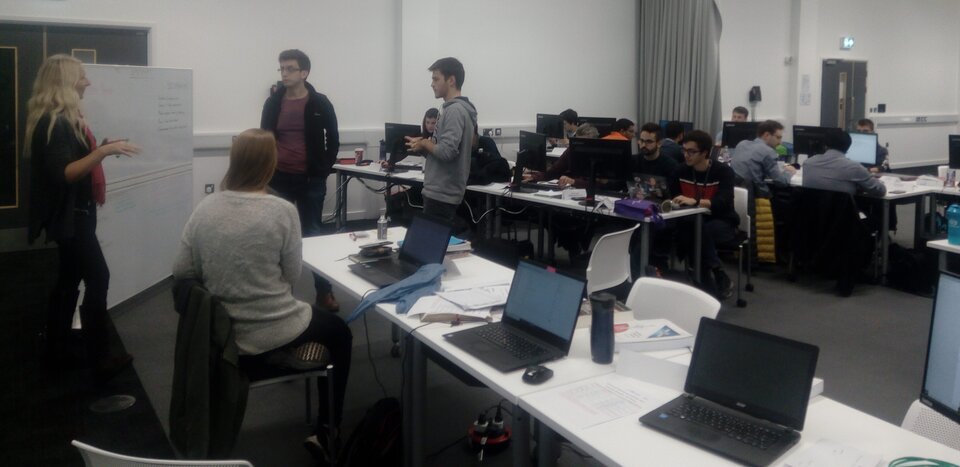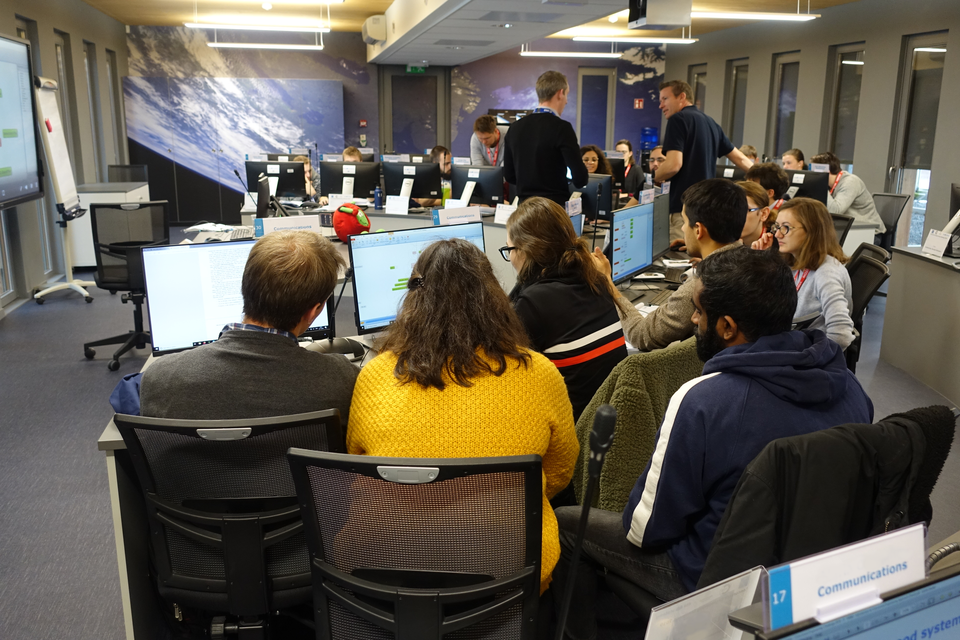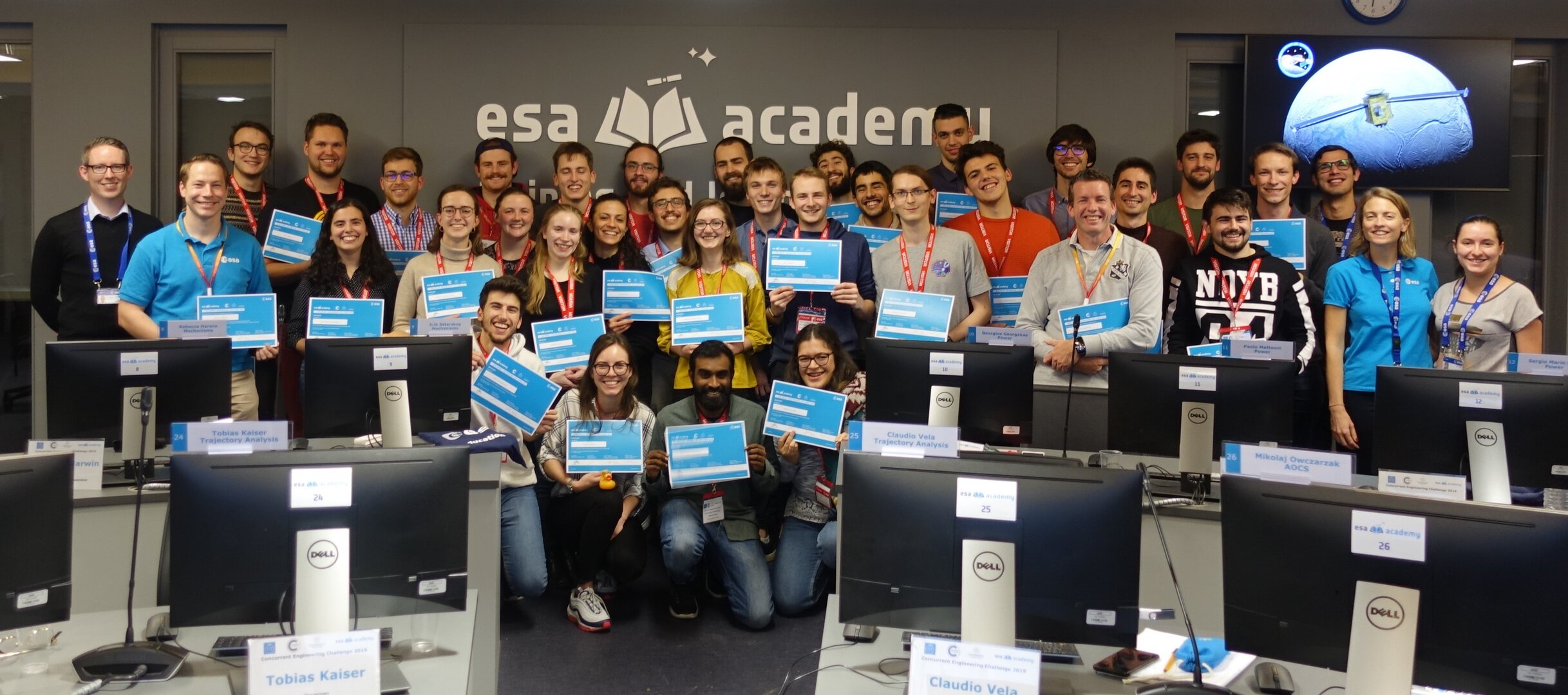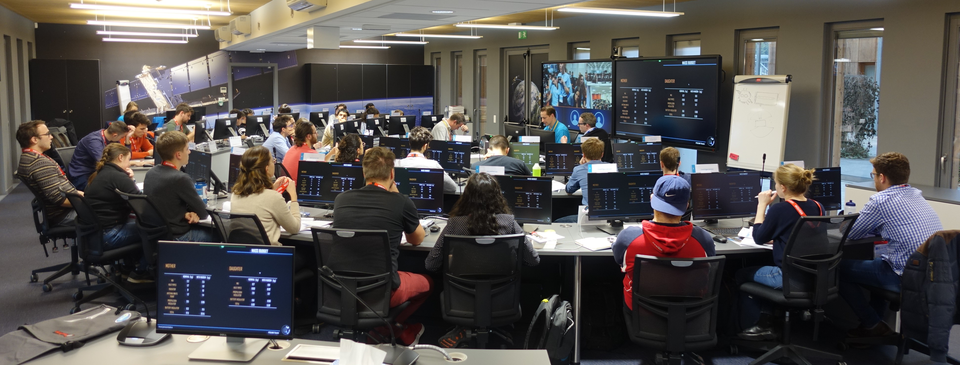Students are called to apply for the 2022 Concurrent Engineering Challenge
In brief
ESA’s Education Office is looking for 30 talented and motivated university students with an engineering or physics background to take part in the Concurrent Engineering Challenge 2022 from the educational Concurrent Design Facility (CDF) of ESA Academy’s Training and Learning Facility in ESEC-Galaxia, Transinne, Belgium.
In-depth
Following the success of the previous editions of the Concurrent Engineering Challenge organised by ESA’s Education Office and Systems and Concurrent Engineering Section, a new edition is scheduled from 4 to 8 April 2022*.
Three groups of up to 30 University students will participate in this Concurrent Engineering Challenge: one directly from the ESA Academy’s Training and Learning Facility and the others from different Concurrent Engineering Facilities (CEF) located in two European universities, respectively: EPFL, the Swiss Federal Institute of Technology in Lausanne (Switzerland) and the University of Luxembourg (Luxembourg).

Concurrent engineering is a method of designing and developing products in the space sector. Contrary to traditional design methods, in Concurrent Engineering, all subsystems are designed simultaneously, as specialists of all disciplines and subsystems collaborate in joint sessions conducted at in a dedicated facility. This is a far more efficient way of designing, but it has its own challenges as well. Solutions in one area that could affect the design in another must be identified and communicated instantly. Although concurrent engineering is a more intense process to begin with, in effect it allows mistakes to be identified earlier, therefore reducing the design time.
Through this Challenge, students complement what they are learning at university by familiarising themselves with the concurrent engineering approach and its benefits, and also learn how ESA assesses technical and financial feasibility of space missions. Europe’s leadership in space depends upon its ability to continue developing world-class missions. To do that, a new generation of space engineers and scientists needs to be trained.

Selected students in each CEF will be supervised by two system engineers and will be given, at the start of the Challenge, the same space mission to design within four days. Students in each group will be divided into small teams of two to four people to cover the following disciplines:
- structures,
- configuration,
- power,
- mechanisms,
- thermal,
- attitude and orbit control,
- propulsion,
- trajectory analysis,
- communications and data handling.
Students within each small team will design their subsystem using the Concurrent Engineering approach with the objective of complying with the mission requirements and prove feasibility.
The three groups of university students located around Europe will not compete against each other. Instead, they will use video conferencing to share each day’s progress, raise any particular difficulties they are facing, and receive helpful inputs from the other participants. At the end of the week, each group will present their final design to the two other groups.
Before the Challenge, all selected students will be offered by ESA the opportunity to participate in an online tutorial of the Concurrent Model-based Engineering Tool (CoMET) to get familiar with the tool and get ready for the Challenge!
In parallel to this ESA’s selection process, the two European universities involved in the Concurrent Engineering Challenge 2022 are organising their own student selection.
Preliminary schedule of the Challenge:
| Day 1 |
Introduction to the Concurrent Engineering Approach Get familiar with Workbooks and CoMET Presentation of each CEF Introduction to the mission Mission overview and requirements |
| Day 2 |
System requirements Mission and system modes definition First iteration of all subsystems – part 1 Each group results presentation |
| Day 3 |
First iteration of all subsystems – part 2 First budgets Finalisation of the concept Each group results presentation |
| Day 4 |
Second iteration of all subsystems Product tree Budgets Each group results presentation |
| Day 5 |
Final design consolidation & any open issues Each group final presentation |
Who can apply?
Students enrolled in university who fulfil the following criteria:
- aged minimum 18 years old. ESA Academy and relevant partners will only appraise applications from students who have no or limited professional experience in relevant engineering or space-related topics;
- be a citizen of an ESA Member State, Canada, Latvia, Lithuania or Slovenia ;
- be enrolled as a Master or PhD student in a university for the academic year 2021-2022;
- be studying an engineering subject or physics (with basic knowledge in space technology).
The selected students will be sponsored by ESA. This will cover accommodation and meals as well as up to 300 Euros for travelling to Belgium.
Students participating in the Challenge from ESA Academy's Training and Learning Facility will be evaluated based on their group work throughout the week and the final results presentation. Upon completion of the Challenge, they will receive a certificate of participation as well as a transcript, allowing them to request ECTS credit(s) from their respective universities.
How to apply?
- Fill in the application form ;
- Upload a motivation letter (PDF, maximum 1 page, no images);
- Upload a CV (Europass format, PDF, maximum 2 pages);
- Upload a formal recommendation letter (PDF, maximum 1 page, including signature, no images) from a university professor or an academic supervisor of current university (if not possible due to the current COVID-19 situation in your country, please ask a university professor or an academic supervisor to send a recommendation email to tlp@esa.int);
- Upload a copy of academic records (PDF).
All answers and documents should be in English (except academic records if not available).
The deadline for applications to participate in the Concurrent Engineering Challenge 2022 from ESA Academy’s CDF is 14 February 2022, 23:59 CET.
For more information, please contact tlp@esa.int.
*Important note
Due to the evolution of the corona virus situation in Europe, and in line with governmental instructions across Europe and with the recommendations of ESA's Director General on travel restrictions for health and safety reasons, the ESA Education Office reserves the right to cancel scheduled ESA Academy training sessions.















 Germany
Germany
 Austria
Austria
 Belgium
Belgium
 Denmark
Denmark
 Spain
Spain
 Estonia
Estonia
 Finland
Finland
 France
France
 Greece
Greece
 Hungary
Hungary
 Ireland
Ireland
 Italy
Italy
 Luxembourg
Luxembourg
 Norway
Norway
 The Netherlands
The Netherlands
 Poland
Poland
 Portugal
Portugal
 Czechia
Czechia
 Romania
Romania
 United Kingdom
United Kingdom
 Slovenia
Slovenia
 Sweden
Sweden
 Switzerland
Switzerland



























